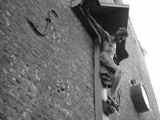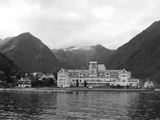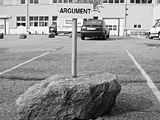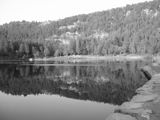documentating and discussing the problem making that is vogging with the tiresome quotidian of the desktop digital.
oh, i'm adrian miles, rmit melbourne and intermedia bergen.
This work is licensed under a Creative Commons License.
innland
akademic werds
akademic werdslinklists
- journals
- interactive cinema
- people
- networked worlds
- interactive media
- deleuze
- mac stuff
- film
- hypertext
- hyperlit
- quicktime
- education
- conferences
- an ostryalean in gnaway
- agent
utland
- jill w
- mark b
- lisbeth k
- torill m
- anja r
- diane g
- jeremy y
- anders f
- noah w-f
- brandon b
- liz l
- collogatories
- matt k
- scott r
- drew d
vogs
archives
written and published in Tinderbox 1.2.3
::videocriture: interactive vernaculars::
![]()
this is the paper I presented at the Association of Internet Researchers annual conference, Maastricht, October 2002. below is the abstract and you can download the powerpoint presentation.
abstract
Internet desktop video is constrained by conservative notions of distribution, authorship, and genre. Content is developed and delivered utilising traditional broadcasting paradigms and our browsers become little more than de facto television receivers.
This has hindered the development of novel critical and creative fiction, nonfiction, and experimental work in interactive networked video and the opportunity that internet video offers for media rich interactivity remains largely unacknowledged and undeveloped.
This paper will describe a practice based research project that explores viable forms of interactive internet based video. This work insists on interactivity as an event within the active video frame as the preliminary requirement for developing an interactive video vernacular, a videoériture. Significant insights into the issues arising from the development of a genuinely interactive video practice will be explored and implications for further research and development in critical, pedagogical and aesthetic practice, will be outlined.
videocriture: interactive vernaculars
::23 Oct 2002 10:22::
this is the first major essay where i explore the relationship of hypertext to cinema. i examine, using speech act theory and deleuze and guattari's discussion of order words and force, the manner in which film edits and hypertext links perform recontextualisation and how this recontextualisation generates a connection and meaning that is not within the shots or nodes. what deleuze and guattari describe as an incorporeal transformation. cinema, however, discovered a form that was able to make visible (a bit like a tattoo) this immanent transformative force in the dissolve, and this essay more or less concludes with a wondering about what a hypertextual dissolve might be (taking as given that to dissolve two nodes into each other would be to mistake the screen and image as immanent hypertextual elements).
pdf available: http://hypertext.rmit.edu.au/essays/downloads/cinemaParadigms.pdf
Miles, Adrian. "Cinematic Paradigms for Hypertext." Continuum: Journal of Media and Cultural Studies 13.2 July (1999): 217-26.
cinema + hypertext
::1 Jun 2002 20:04::
an early print essay that shows how quickly the world changes. here i argue for the relevance of hypertext and hypermedia in the face of the multimedia onslaught (so dot com ecommerce flash had not yet happened) where what hypertext already knew about architecture, narrative, and working methodologies has much to offer work in multimedia (in those days that meant cdrom). it is a sort of celebration of the low tech aesthetic that hypertext provides (something i still pretty much subscribe to).
Miles, Adrian. "The Emperor's New Clothes." Media International Australia 81. August (1996): 68Ð76.
emperors new clothes
::1 Jun 2002 20:05::
a 'creative' academic work that was originally published in postmodern culture. this has recently been written about and exhibited as a 'seminal work of net.art'. go figure. it's from the days when net.art wasn't yet really net.art. i was just trying to literalise the formal properties or qualities of html based hypertext in a self reflexive academic manner. is also what a net.art group has recently defined as net.film because of its use of time based links (something i've written critically about elsewhere - how the development of things like the refresh metatag in the html dtd specification is indicative of hypertext's desire to move in time).
Miles, Adrian. "Hyperweb." Postmodern Culture 6.3, May (1996).
hyperweb
::29 May 2002 10:15::
a multilinear media rich hypertext essay that is a close reading of one sequence from kelly and donen's "singin' in the rain". originally published in postmodern culture. this is another of my explicitly hypertextual essays. this one relies on thematic links and was my first major exploration of using hypertext to write cinema studies so that as i wrote (in storyspace) i had the quicktime embedded in the writing bearing witness to the writing-in-process. there is a section here that discusses hypertext and academic writing, though its almost orphaned in the general structure.
Miles, Adrian. "'Singin' in the Rain': A Hypertextual Reading." Postmodern Culture 8.2 (1998).
singin in the rain
::29 May 2002 10:17::
a work originally published in an issue of mesh, an australian new media publication from experimenta.there is an essay but it exists in relation to a small hypertext piece that can only work or exist online. so the entire work is about the distance and tension between this. the hypertext piece is a celebration of the link as noise and stochastic process. it is a text that is only ever in process and relies on the readers activities and interpretative endeavours.
Miles, Adrian. "Foreword: Writing in, Writing on (a Work in Progress)." Mesh.11 (1997): 101Ð2.
enmeshed (noisy links)
::29 May 2002 10:18::
this is an online essay, mirrored on my server (with permission). this is one of several electronic essays i've written where the work is explicitly hypertextual. uses hypertext writing practices (this one was written in storyspace then exported and marked up in html) while making arguments about hypertext. this one explores the relation of cinematic narration to hypertext narration in link node hypertext and suggests that the most common institutional approaches to links is pretty much a restatement of what in cinema (and literature) would be recognised as realism. the sort of realism where the telling ought not to be visible, to be not in the way of the 'story'. you know, invisible editing, as if it really happened sort of things. the essay shows that while continuity editing aids continuity (duh) the loss of continuity doesn't compromise readerly intelligibility.
Miles, Adrian. "Hypertext Syntagmas: Cinematic Narration with Links." Journal of Digital Information 1.7 (2001).
narrating with links
::1 Jun 2002 20:04::
::a general economy of links::
![]()
this is another of my academic hypertexts. this one uses a map view of the hypertext structure as well as thematic links. in the map view node colour reflects link density (both links in and out), and it also plays an opening game where there is a brief loop for the reader if they follow the constrained thematic links provided. (it's one of the ways in which the hypertextual echoes some of the concerns of the oral and the musical, this sort of phatic repetition is partly ironic - it's academically reflextive after all - though structurally significant. as mark bernstein is fond of saying, repetition is not a vice.) this essay concentrates on bataille's idea of a general and restricted economy and suggests that theories of link usability can be reasonably equated to what literary (and film) theory would describe as realism. they have a similar hermeneutic and narrational economy. by identifying these link rhetorics as realism it then opens up the exploration of links to the processes already established in literary theory and cinema studies where 'realism' becomes synonymous with various ideological appropriations, and provides a direct route to things like barthes' writerly and readerly, but without the existing hypertextual baggage that has accrued around the use of barthes et al in hypertext.
Miles, Adrian. "Realism and a General Economy of the Link." Currents in Electronic Literacy Fall.5 (2001).
a general economy of links
::1 Jun 2002 22:18::
::event and hypertext structure::
![]()
this is an essay about links and excess where i foreground hypertext theory's anxiety about the link and its insistence on domesticating that which cannot be domesticated. it is about the role of context, a general economy and the nonlinguistic remainder of the link - that links are performative speech acts, have force, and can only be understood retrospectively and hence problematise narrative teleology. finally i reiterate my oft repeated argument that hypertext is a postcinematic writing practice. there's more (including the steak knives), i tend to pack a lot in 8 pages. got the nelson award gong (wall plaque and $1000) at the 01 hypertext conference.
Miles, Adrian. "Hypertext Structure as the Event of Connection." 12th ACM Hypertext Conference. Aarhus: ACM, 2001.
event and hypertext structure
::1 Jun 2002 20:06::

ice lake. vidden, bergen.

crucifix and clock on house wall. maastricht.

barge on maas river. maastricht.

frank schaap. aoir. maastricht.

balestrand

i was there it isn't a postkort

it says 'argument' it isn't sculpture

skomakerdiket
